If you’re a marketing lead who’s struggling to get company stakeholders onboard about investing in SEO, you need to tweak the language you use in the boardroom.
Speaking their language will not only help you make the case for your suggested strategy but also help them see the overall value of SEO.
Steering clear from jargon and focusing on the ROI will present better and provide a data-driven approach to stating your case.
In this article, we will discuss how you can do those things better to get the green light for SEO efforts quicker.
Talk About Why SEO Strategy Matters to Your Business
When you are addressing company higher-ups, talking about your ROI should immediately resonate and seal the deal. But if you want other company leaders interested and onboard as well, think about how SEO would make their jobs easier.
For example, it’s will be easier for your sales team to see the value of SEO when they see how SEO insights also help them acquire warmer leads as compared to other channels.
Here are some questions that you will likely need to address about SEO from everyone involved:
- How will keyword rankings help the business?
- Why should I do SEO? Can’t we just run ads that bring us predictable results?
- What role does SEO play in the customer acquisition process
Here is how you can address some of those concerns:
Discuss the Role of SEO Strategy in a Business’ Online Success
One of the primary reasons every business needs to consider SEO is that organic search is the top traffic source for most websites.
Not focusing on it can be equivalent to neglecting nearly 49% of shoppers who start their buying journey on a search engine.
In other words, by not leveraging SEO, you may be leaving the money of at least 5 out of 10 customers on the table.
SEO is also important to actually acquire better leads. Blogs and other content created for an SEO strategy provide useful information to customers, in turn helping them trust your business. As blogs usually funnel people from “just browsing” stage to “ready to purchase” stage of the buyer funnel — they serve to warm the leads that get passed along the sales pipeline too.
One more thing to consider about an investment in SEO is that only 0.63% of users go beyond the first page of a Google search. So, the later you start your SEO efforts, the more time your competitors have to get a leg up on you.
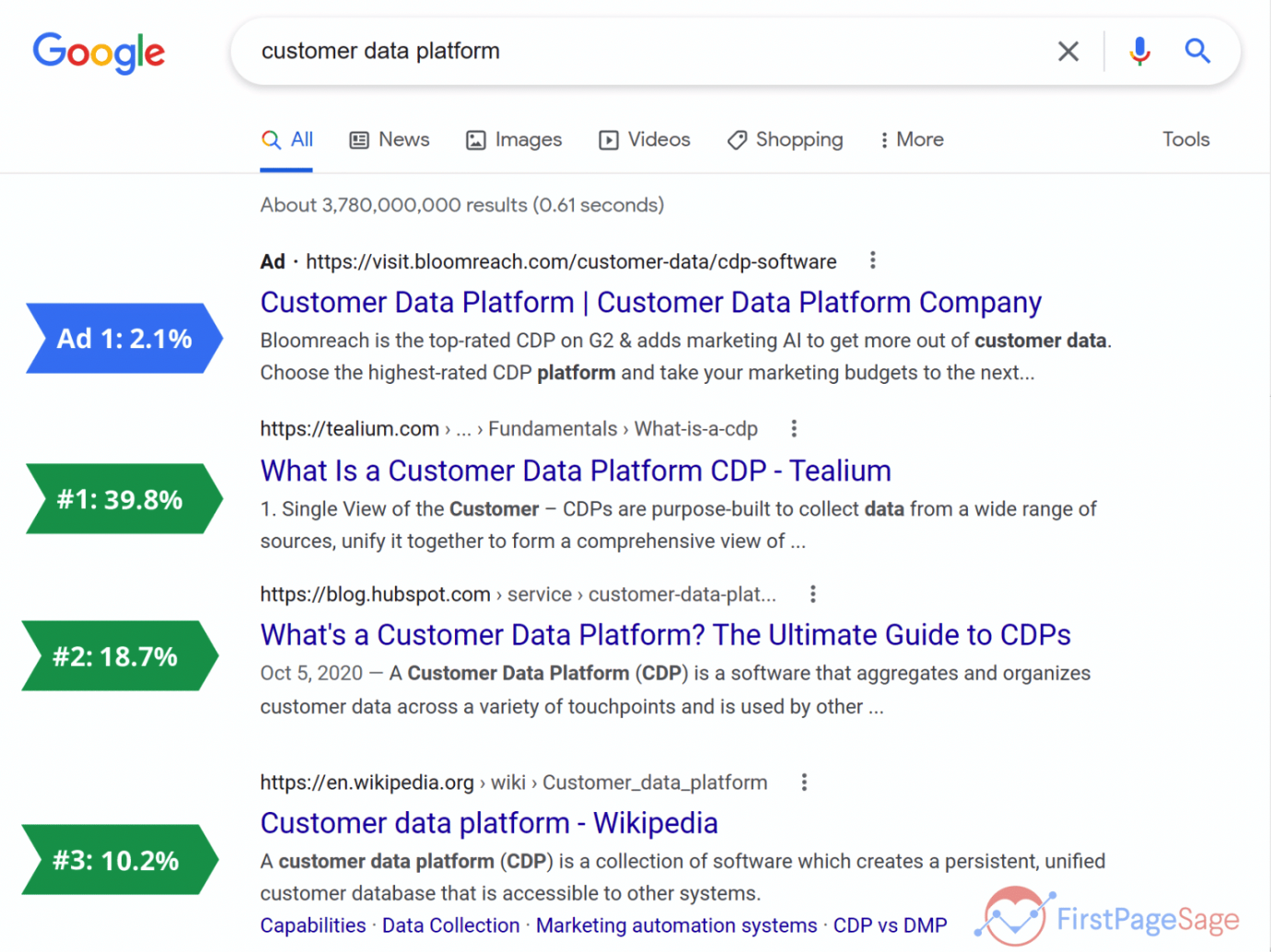
How to communicate it: Time you spend debating SEO budgets is also being spent by your competition to get ahead in search rankings.
In a business context, it’s similar to your competition having billboards in the busiest part of town, while your shop sits idly with no marketing leverage in a remote corner of town.
Business leaders may not understand clicks or impressions, but if you put it in terms of metaphors they understand, they will see your point.
Emphasize the Impact on Business Growth
As SEO is a source of organic traffic, your efforts don’t stop yielding results the moment you stop doing SEO.
Unlike ads, SEO creates a stream of traffic that is long lasting.
How to communicate this: In a business context, this means your brand gets more eyeballs without paying for it month over month. You could therefore present a comparative analysis of costs involved in online ads organic traffic to make a case for SEO over a term of a few years. The difference in ROI should make the case for you.
Another aspect you could emphasize is the snowball effect of SEO. When a business consistently follows SEO guidelines, there’s a compounding effect. Meaning, your traffic grows over time and you start seeing results quicker after you have built some authority.
In other words, SEO is a self-sustaining machine when you get it right.
Here’s a quick diagram of what happens when you invest in SEO.
You…
- Invest in SEO to rank on Google.
- Rank on Google’s top 3 searches.
- Attract the attention of your ideal customer who finds your links and talks about their experience online or with others.
- Will get more views on your website. With other SEO tactics and your sales team pulling their weight, the customer will feel like the product is worth a trip to the checkout page or physical store. Your business will earn more revenue.
- You can reinvest some of this revenue to keep up the consistency.
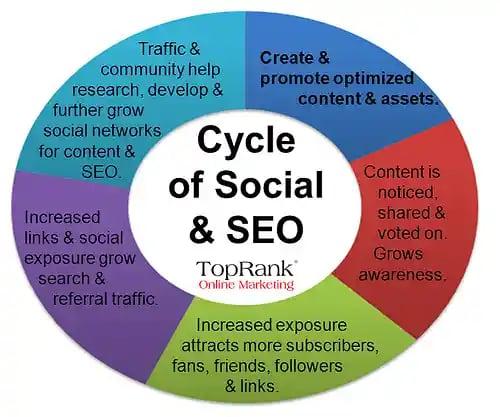
Business Scalability
As the SEO compounding effect grows, so will your traffic. Meaning you won’t need to set up a new campaign each time. As long as you have a qualified team overseeing and optimizing your SEO campaign regularly, your ROI from SEO can continue to grow.
For any new products you launch, you’d be able to leverage your existing authority to get results quicker. Even if it does take some time to see results initially, once they are there — you can leverage those results for a long time.
We don’t mean that you don’t need to track the SEO results after you achieve them. But even that can be done in most SEO software and you don’t have to worry about manually checking in.
Pro Tip: Run a Competitor Analysis on your most successful competitors in SERPs. Show how much their success online depends on SEO.
How to communicate this: You could also cite other popular businesses who have built their entire success off of SEO. For example, take SurveyMonkey, a popular survey-building tool. It saw a growth of an average of $200 million in revenue in a year from organic search. Their SEO tactics focused on discussing customer problems in all their content, including blogs.
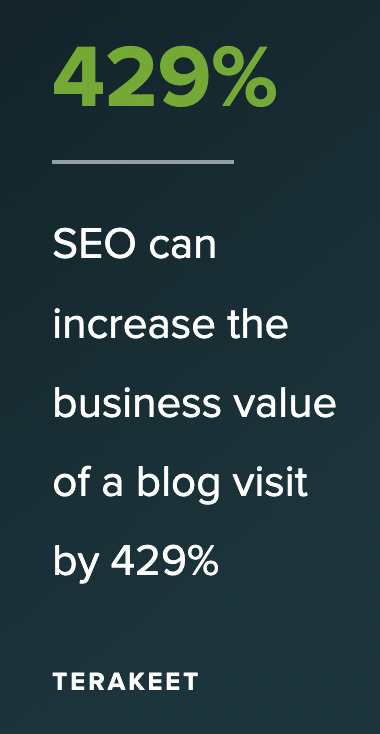
Explain How it Improves Conversions
A non-marketing leader needs to know why the visibility of your website is essential for the bottom line. It is key to establish how organic visibility leads to both: increased revenue/conversions and more authority/trust.
Next, talk about how SEO naturally combines Conversion Rate Optimization (CRO) within its discipline. Meaning, not only does it get you more traffic — you get more conversions from the traffic you already have too.
How to communicate this: You can show the relationship between the two like this:
- Show the number of visitors you get on the website today. Side-by-side, also show the number of conversions you got from these visitors.
- Calculate the visitor:conversion ratio.
- Show how improving this ratio can directly impact revenue—even if you don’t get any more visitors than you already do.
Show How it Establishes Your Business As Knowledgeable
Looking to be recognized and taken seriously in your industry?
Thoughtful, well-organized content that’s optimized for SEO is one of the best ways to establish that authority.
How to communicate it: You’ll need to show how important content is here. So, you need to dig up the number of leads/business inquiries or partnership requests you get based on blogs or FAQs on the website.
To do this, you’ll need your Google Analytics insights:
- Show how many people’s first interaction with your brand started as a result of good content.
- Show how many people navigated to other important sections of the website, such as sales pages or contact pages, after reading a blog.
- Show how many of those customers actually end up inquiring as a result of that first interaction.
Tip: When you’re discussing the importance of blogs in establishing your business as a key opinion leader, don’t go into detail about how you calculated it (unless you’re specifically asked to do so.) That’s not important.
Instead, explain the importance of the share of voice (SOV) instead. When you show that your SOV will increase because of SEO, you are skipping over the technicalities and jumping right to why SEO helps you appear better than your competition.
While non-marketing leaders may not care about SEO jargon, they’ll surely want to pay attention to market positioning as compared to the competitors. As a marketing lead, you can use that as a driving factor to encourage a bigger investment in SEO.
Discuss the Long-Term Benefits of SEO
SEO is a long-term game, as are its benefits and results.
When a higher-up in your company asks about the budgetary efficiency of SEO, they may be tempted to dismiss it as it doesn’t produce results immediately. But it’s important to highlight that those results last a long time and offer a high ROI.
In fact, it’s one of the only marketing channels that people actually take into consideration when purchasing a company. Meaning, it adds incremental business value that can actually be used to evaluate a business’s evaluation.
Explain that even though it’s true that SEO measures take 4-12 months to show results, the ROI from those results is immense in the long run.
How to communicate it: Talk about the secondary benefits of SEO that they might not know, but play a role in business success:
- Understanding the voice of the customer comes from consistent user research, which is the crux of SEO. With these insights, you are better equipped to understand product development, craft better sales pitches, and improve your customer service.
- A part of SEO analysis is understanding what the competitors are doing. So, while investing in SEO, the business is also simultaneously doing market research and identifying how their competition is faring in the market. This can be an opportunity to learn from their ideas too.
- The goal of technical SEO is to optimize the website for the search engine, but it improves user experience as well. Better navigation leads to a better user experience. And a well-designed UI can boost conversions by 200%. This has a direct impact on revenue.
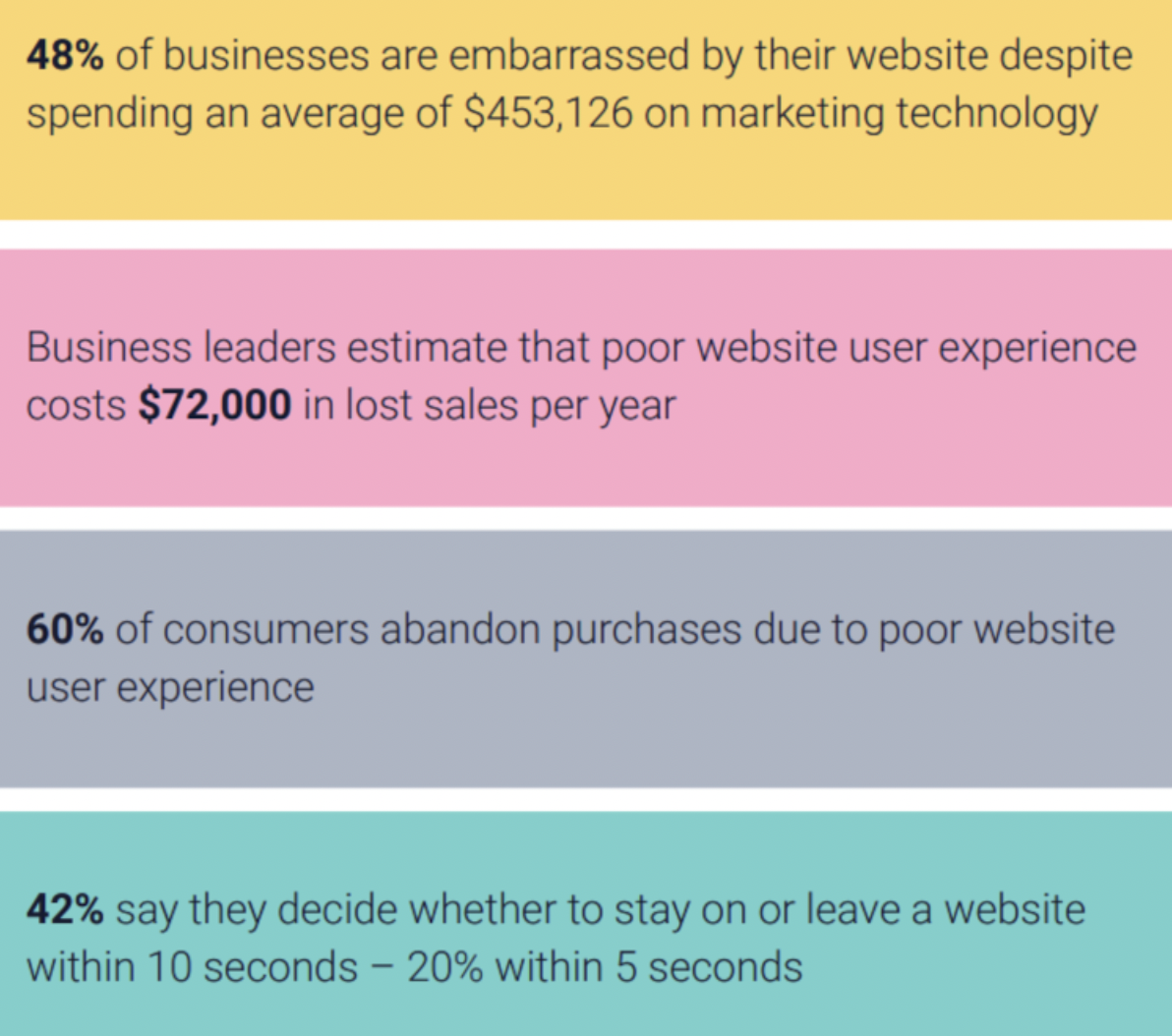
How to Present SEO Results
Rather than just talking about an improvement in SEO metrics when asked about SEO results, talk about their impact on business success. Put it in terms that make it clear that every metric is connected to a real business goal.
SEO Metrics and KPIs
Explain that SEO KPIs are just like sales metrics; they are performative indicators that show you how your SEO strategy is performing.
You can show how each SEO KPI measures something that’s valuable for the business.
| SEO KPI | BUSINESS CONTEXT |
| Content engagement | Build trust and loyalty through content -> drive sales |
| Customer lifetime value | Maximize customer relationships |
| Keyword Rankings | Build qualified leads |
| Organic traffic | Sustained interest in the product |
| Page Impressions | Connecting with target customers |
| Conversions | ROI |
Here are some other metrics that your brand may consider tracking.
- Brand mentions and missed brand searches
- Customer Retention Rate
- Leads generated
- Email sign-ups
- Reviews
Whatever you track, just remember to always put it in terms of its impact on the business itself.
Lifetime Value of Web Traffic
As the lifetime value of web traffic shows the monetary value of your organic web traffic, you can show how much money your business saved on ads by getting this traffic through organic search.
Establish a nexus between “investing in SEO = spending less on ads.”
You can also talk about customer acquisition costs (CAC) and how SEO can reduce it by 87.41%.
Put it in terms they will understand. For example, you could talk about a scenario wherein you spend $1000 on a PPC campaign. You get 10 leads from it. The customer acquisition cost (CAC) can be $100, assuming that’s all it takes to convert a lead into a customer.
Compare it to putting the same money in SEO. Sure, it may take some time to rank. But once you do — whether 100 people visit you or 1000, your costs don’t change. Talk about how much money can be saved this way in the long term.
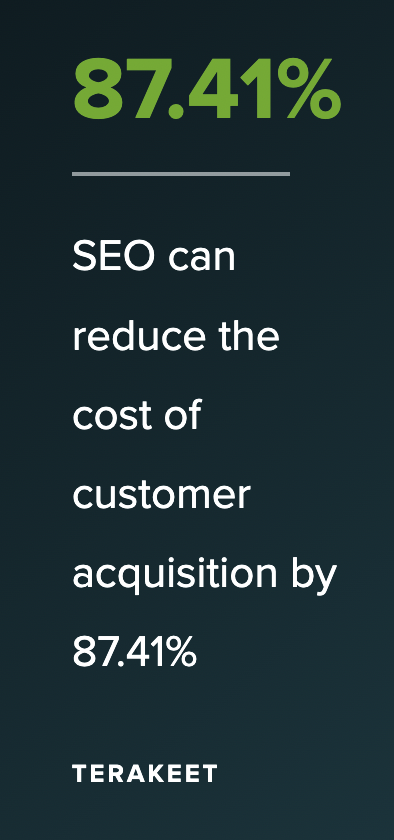
Explaining the ROI of SEO
For a non-marketing leader, the easiest way to understand the value of SEO is to see it in ROI terms.
Typically, this is how the ROI can be calculated for a business that has been doing SEO for a few years and gets considerable traffic from it:
ROI = (Revenue from SEO – Cost of SEO)/Cost of SEO
If you can show through data that they made even $2 for every $1 they spend — your case is made for you.
If you are just starting out at SEO and don’t have data to calculate ROI yet, you can look up statistics for SEO ROi in your industry and show the ROI other businesses seem to be getting from SEO.
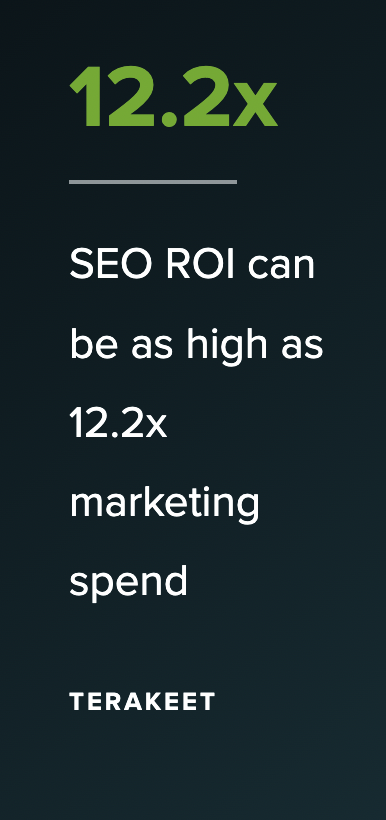
When you present a narrative with the simple “We spent this much and earned this much more,” you will drive home the value of your SEO strategy.
BONUS: Tips for Communicating the Value of SEO as a Marketing Leader to Other Stakeholders
As a marketing leader, terms like PPC, CTR, conversion rates, and keyword bids are part of your everyday vocabulary.
For non-marketing leaders, these terms may be challenging to navigate. Here’s how you can bring the sales team, marketing team, and higher-ups on board with your SEO vision so everyone’s aligned about their role in the process:
Tailor Your Message
Tailor your message for each team you’re presenting to, just like how you would target different segments of customers with a different messaging.
A Sales head, for instance, will want to know about the top line and how SEO can help dominate the market. For them, number of leads, share of voice, and market share are vital.
When you talk to the CFO, you want to have the financial data on SEO handy. They will want to know how to earmark SEO budgets and find new investment opportunities. When you speak the language of forecasts, budget efficiency, and cost vs profit analysis — they will be more likely to understand your perspective.
Here’s how you can present SEO data in an understandable way:
- Use lots of visual data like graphs and pie charts.
- Provide a narrative for each data point.
- Explain all technical terms before using them.
- Present before and after comparisons wherever possible.
Get Better at SEO Reporting and Presentations

Your data can be informative and valuable. But it will only have the impact you want if presented well.
The SEO report should be tailored according to who you are presenting the findings to. Your presentation to the CFO will differ from the one to the CEO.
This is true even if some of the SEO metrics you cover will be the same across these reports. The difference lies in contextualizing the impact of the result according to who you are reporting to.
The easiest way to communicate the impact of SEO is through case studies and success stories. When justifying the budget requirements for a new SEO strategy, share case studies that show how that strategy helped other businesses, preferably those in your industry.
When reporting SEO performance for your implemented strategies, explain the impact using charts and graphs. Highlight improvements in revenue, CAC, traffic, and other business KPIs, not just SEO metrics.
Key Takeaways
The support of other teams and executives is vital for realizing the benefits of SEO for business growth, digital success, and ROI.
When you explain the value of SEO for cross-functional efficiency across teams, you will receive more support for higher investment in SEO.
Keep your concepts simple. Avoid SEO jargon. Show how each SEO metric relates to actual business goals.
Share relevant SEO resources and guides that break down SEO concepts using the “keep it simple, silly (KISS)” principles. If you can help everyone on your team understand the relationship between SEO and its alignment with the business itself, you will find that non-marketing leaders are much more collaborative.










